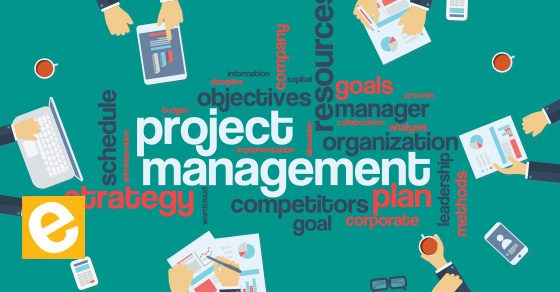All new initiatives require a particular method and chronological procedures that should be followed so that we can accomplish the goal in the given time. Regardless of the nature of the project, it’s substantial that a certain predefined process is followed. Whether it may be a highway construction, software development or launching a new product, all should pertain by a well defined and organized technique.
To start executing authentic project management processes and stages at your group in order to bring your corporation’s workflow under control a well defined procedure is of utmost importance. In starting, the notion of the project management method and its logical change can seem a little intimidating, but when you go through this article it will give you everything you need to set up PM processes and phases at your corporation.
To ensure such a procedure has followed the presence of the PMP training course is essential. Any professional project manager with knowledge and understanding of the basic principles that should be followed while undertaking a project guarantees the success of the project. In this article, we will discuss the various processes that a project goes through.
The five project management processes
The Guide to the Project Management Body of Knowledge (PMBOK Guide) disintegrates the practice of managing a project into five stages. These technique groups are generally characterized as:
- Initiating:
In this stage, the project is conceived and its practicality is deduced. According to SME Toolkit, some actions that should be conducted in this process comprise specifying the project objective; establishing the project spectrum; recognizing the project manager and the key stakeholders; identifying potential risks, and producing an estimated budget and timeline
- Planning:
Second, the project manager will create a scheme to guide the entire team how the project will initiate from imagination until its completion. Planning encompasses many processes such as
- Scope: There will be a jotted down spectrum statement that regurgitates what are the needs of the project, and what its deliverables and purposes are.
Definition: Here you segregate the larger goals into minor ones, which will assist with organizing them.
- Tasks: Identity what tasks are necessary to produce the deliverables, figure out if any tasks are dependent on other tasks.
- Schedule: Determine the interval of the assignments and establish dates for their fulfillment.
- Cost estimation: Estimate the expenses implicated across the project and propose a budget for the whole project that must not be exceeded throughout the process
- Quality: Make sure the quality objectives are met throughout the project.
- Organization: give attention to how the project will be organized, comprising documentation on advance.
- Employees: Determine the functions and duties of the project crew. This will distribute the tasks evenly
- Communications: This is very vital as this tells how the information will be transmitted, to which part of the team and how many times.
- Hazards management: calculate what dangers are plausible, how they can affect the project and then plan how to defeat them.
- Acquirement: Decide what work or materials will be contracted. Define those contracts and who they’ll go
- Executing:
In the course of this phase, the project manager will conduct the acquisition expected for the project as well as personnel in the crew. After this, undertaking of the mission goal and are imposed to ensure effective management of the team units on the surface. PMs are liable for tasking and supervising the work on the project while conserving good connections among the team members and keeping the full project on period and make sure it does not require more funds as provided in the budget. The project manager should make it sure that he functions as a highly composed and an extraordinary executive. That’s because he will need to address team dispute and any problems that arise along the path, anticipating periodic and upright communication with all team members and stakeholders.
- Surveying and control over the team:
In this stage, project managers will firmly assess the growth of the project to guarantee it is evolving appropriately. Documentation such as data compilation and lingual and written stature summaries may be utilized. This will ensure that there are no hidden flaws in the project that can later lead to a higher problem that can be very difficult to handle
- Winding up:
The final procedure occurs or takes place when the project output has been elicited and the stakeholders corroborate and approve the final product. Throughout this stage, the project manager will seal the contracts with suppliers, third-party sellers, specialists, and other third-party providers. All documentation will be stored and a final project summary will be produced. Further, the final part of the project plans — the plan for damage assessment and expenditure — will kick-off. The data stored from this project can be or will be user as for reference in the future similar ones.
Project management techniques
Despite the basic project management procedure is moderately reliable and is used most of the times, the direction in which a project manager attempts it can fluctuate extensively. In truth, there are several various protocols that project managers can take to organize and supervise their projects through the process. Some of the most popular can be classified as the ones given below:
- Conventional, sequential procedures, such as waterfall and critical path method (CPM).These strategies are usually best suited for projects that generate a physical, actual product varying from a skyscraper to a mobile phone.
- The latest addition from the AXELOS Ltd. which are agile methodologies, such as scrum, kanban, radical programming and adaptive project framework. These procedures were initially built for software creators and for projects that may have to alter tasks or preferences.
- Methods with a change-management focus, for instance – event chain methodology (ECM) and extreme project management. These approaches factor in the likelihood of enormous modification through the project’s interval and assemble in a degree of pliability.
- A process-based technique, like a lean project management. Lean concentrates on proficiency and reducing debris of any kind and can be pertained to almost every enterprise.
Mainly it’s up to the management to determine what procedure to follow. But with experience, you will be aloe to choose the right processes and. No one will be able to question your decision.


